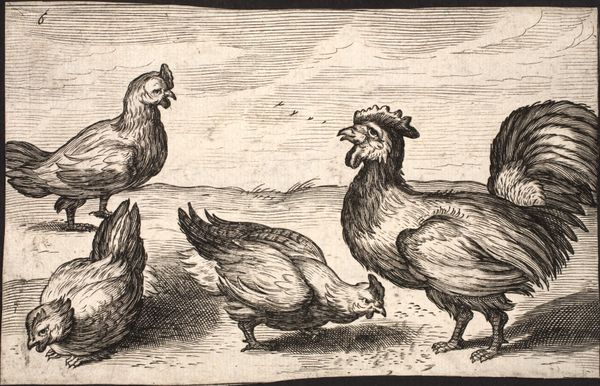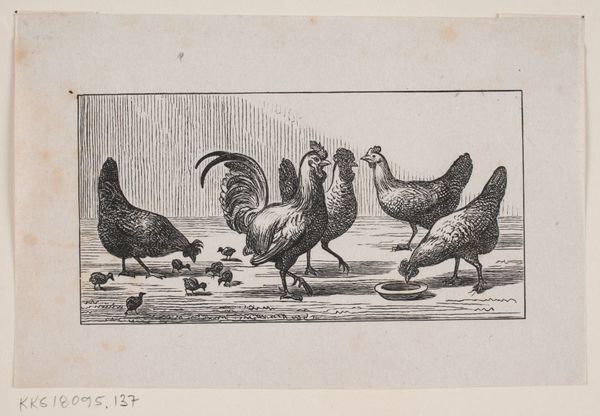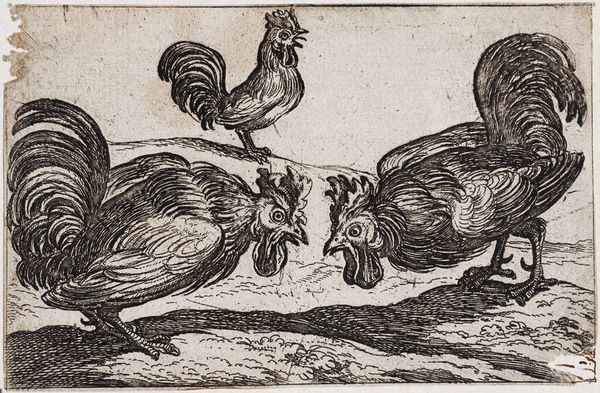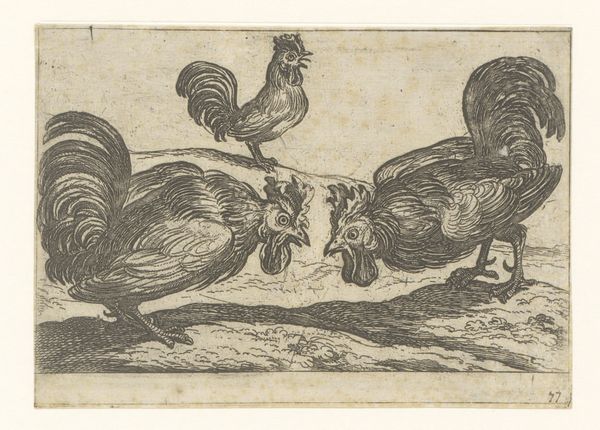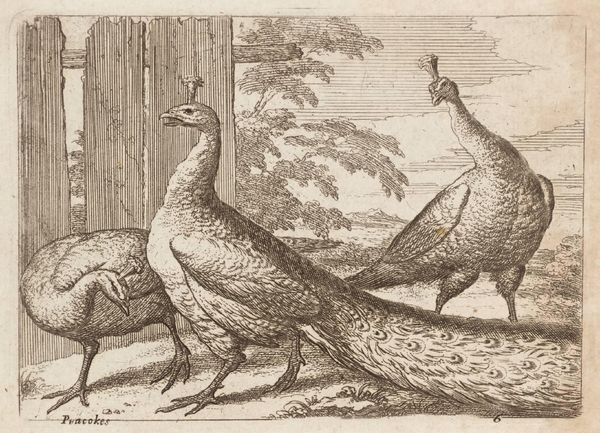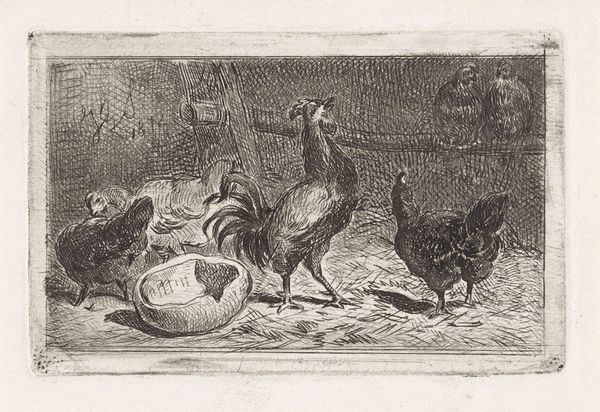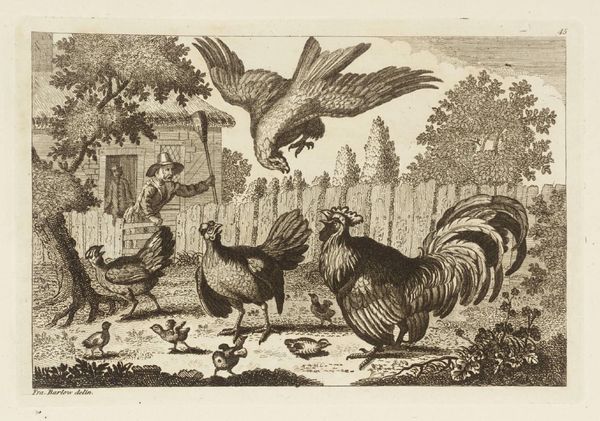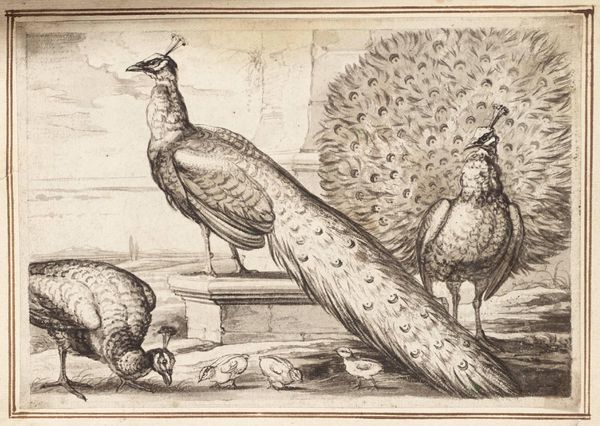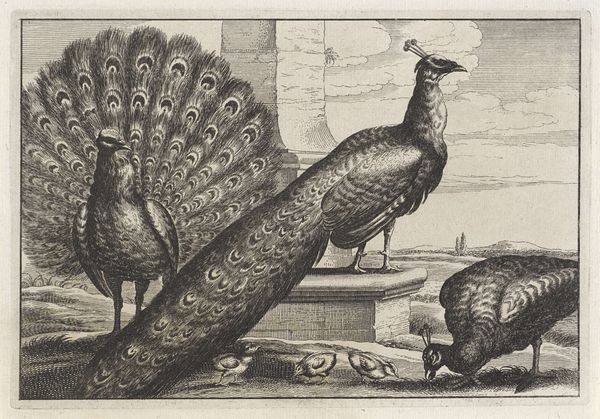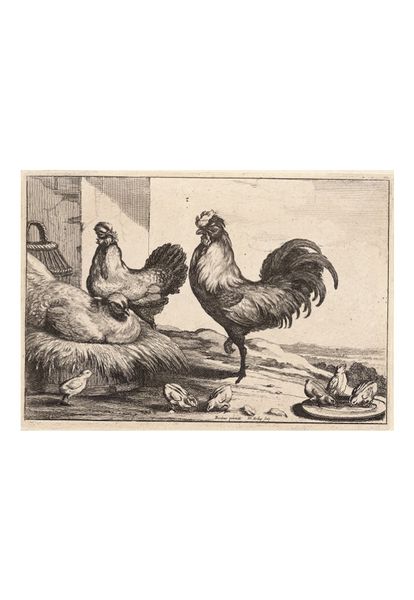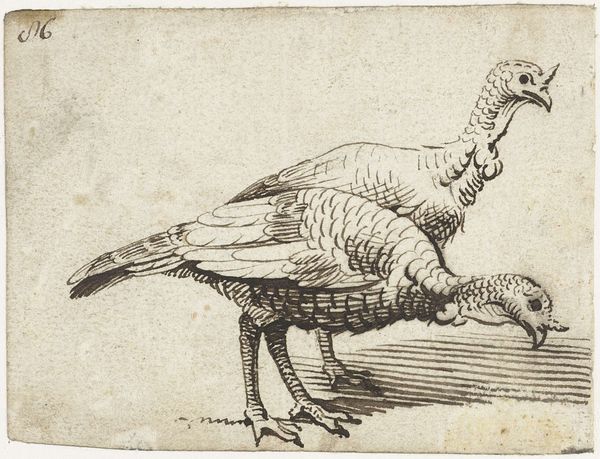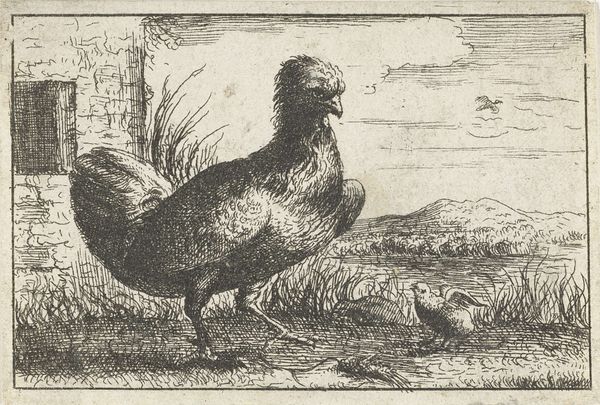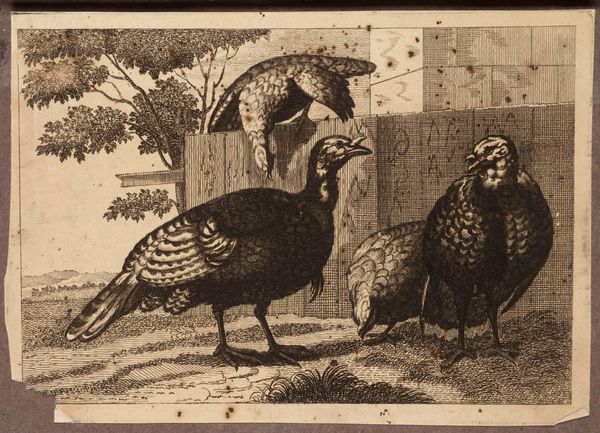
drawing, print, etching, engraving
#
drawing
#
animal
# print
#
etching
#
landscape
#
figuration
#
engraving
Dimensions: 89 mm (height) x 145 mm (width) (bladmaal)
Curator: Let’s discuss this striking engraving, "Three Peacocks," created sometime between 1571 and 1631 by Jacob Matham. Editor: The detail is amazing. The texture and the fine lines in the bird feathers creates such drama! Curator: Absolutely. The landscape tradition is at work, although the focus on the peacocks suggests figuration plays an equally important role here. Given Matham's era, what historical and cultural factors might have influenced this specific rendering of peacocks? Is it just about a picturesque moment? Editor: Well, peacocks have been laden with symbolism for millennia! Ancient cultures, Christianity, and even Hinduism use the peacock to convey ideas about beauty, pride, resurrection, or immortality. It's a visual language! Maybe Matham intended to evoke all these cultural memories and weave them into a more pointed narrative, especially during a period marked by social hierarchies. What’s more is the number three and its symbolic connotations regarding wholeness, triadism or divine implications across faith traditions! Curator: Indeed, if we situate the artwork with the fashion for emblem books during that period, then these weren’t simply decorative images. What does it mean to show off the peacock at this time? Think about wealth, luxury, social standing—were the owners perhaps flaunting their prosperity and status? I imagine they were! Editor: That would be such a deliberate statement for that time, in that it represents worldly pride but also awareness of historical memory that goes hand in hand with a visual culture of learned viewers! These images may have had some impact by shaping cultural associations for audiences then. Curator: The question of whether this imagery can incite meaningful changes still rings loud even now, given Matham’s intention to make these emblems part of critical dialogue, so it invites contemporary theory around issues of power and image production as we examine these issues within present day sensibilities around political messaging. Editor: Looking closer has deepened my appreciation! This print truly resonates as more than a simple portrayal, layering cultural context, symbolism, and potent implications about historical meanings of opulence through animal representation Curator: Precisely; I’m grateful you expanded my perception of emblem production—they contain rich ideas reflecting intersectional discourse!
Comments
No comments
Be the first to comment and join the conversation on the ultimate creative platform.
